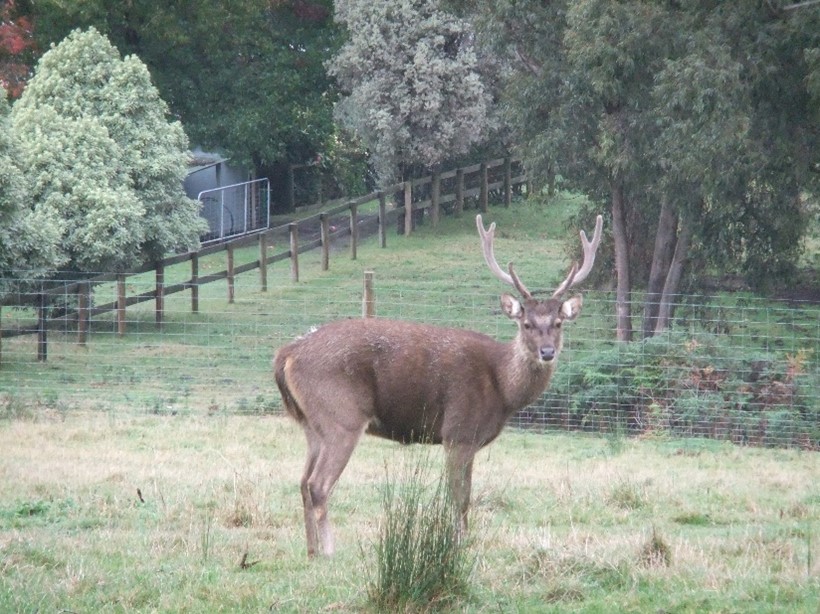Fallow Deer
This species was introduced into Australia around 1800 from Europe.
Farmed extensively with some wild numbers in all states. Fallow bucks carry flat antlers (about 60cm long), are broad, flattened at the tops and have a number of short tines (points). The only other deer with flat or palmate antler is the Moose.
This antler can be used for dog chews and decorative purposes eg, chandeliers, table/mantlepiece ornaments.


Red Deer
This species was introduced into Australia around 1820 from Europe.
Farmed extensively with some wild numbers in most states. Red deer is one of the largest species of deer. Their antlers have multiple tines (points). The main beam usually ends in a terminal crown of two or three tines. The antlers increase in size and the number of tines annually eg, a 10-year-old Red stag may have 20 tines – 10 per side.
This antler can be used for dog chews, knife and tool handles, jewellery and decorative purposes e.g. chandeliers, table/mantlepiece ornaments.
Sambar Deer
This species was introduced into Australia around 1860 from Sri Lanka and India. Now farmed in small numbers, but mainly wild in Victoria. A Sambar antler is typically three tined and the outer top tine is usually the continuation of the main beam while the inner top tine is somewhat shorter.
This antler can be used for full set wall mounting, table/mantlepiece decorations, but mostly sought after for knife handles. This antler is NOT suitable for dog chews.


Chital Deer
This species was introduced into Australia between 1800-1803 from Sri Lanka and India.
Now farmed in small numbers mainly in Queensland. Chital antler is typically three tined and the outer top tine is usually the continuation of the main beam while the inner top tine is somewhat shorter. This antler is slightly smaller in beam diameter than the Sambar.
This antler can be used for full set wall mounting, table/mantlepiece decorations, but mostly sought after for knife handles. This antler is NOT suitable for dog chews.

